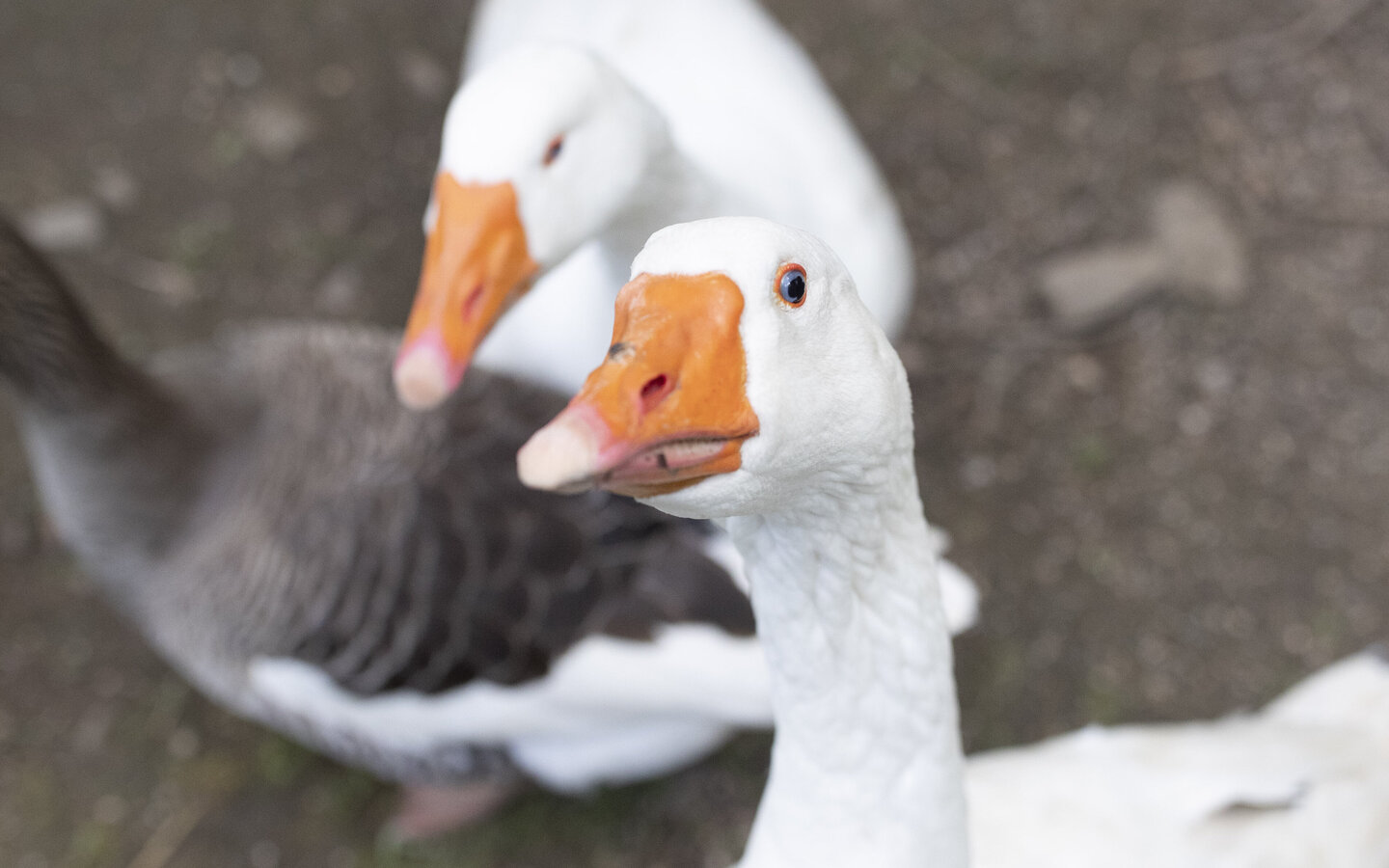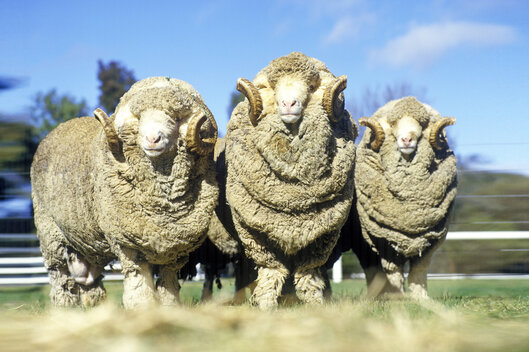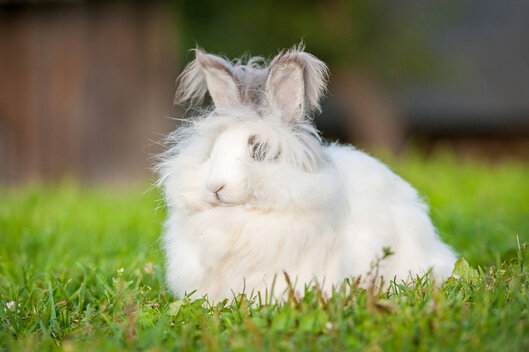How geese suffer for comforters, pillows and co.Why you should not buy products made from feathers and down
Comforters, pillows and jackets filled with down and feathers are still popular. However, countless geese and ducks suffer and die for these light and warming textiles.
The industry plucks feathers from live geese
Most of the feathers and down used in bedding and clothing come from ducks and geese. For geese in particular, this is often associated with great suffering. Many of them are still plucked alive: fattening geese up to four times before slaughter, breeding geese up to fifteen times in their lifetime.1 To do this, the employees catch the animals and clamp them between their legs. They then quickly tear out any stuck feathers and down. Many geese bleed afterwards. Sometimes their wings or legs break during the violent treatment. In some cases, the birds even die from the stress.
Incidentally, the industry only removes the feathers and down from ducks after they have been slaughtered. However, this has nothing to do with animal welfare. There are simply enough slaughtered ducks to satisfy demand. Even if the animals are not plucked alive, their suffering before death was often particularly great. This is because the ducks often come from foie gras farms abroad.
Wrestling is also painful for geese
Farms that rear geese remove their feathers and down during the moulting period. This is the term for the natural change of feathers, during which the plumage is renewed at different intervals depending on the bird species, temperature and diet. The feathers are then no longer supplied with blood. They are loose and fall out. At first glance, it seems gentle on the animal that humans comb, comb or brush them out during this period. But this is a misconception.
It rarely happens that all animals are groomed at exactly the right time. As not all animals moult at the same time and it would take too long to sort them all out afterwards, the feathers or some of them are still firmly attached to the skin of many animals. The geese are then partly plucked and partly plucked alive. In addition, the birds also suffer from stress when being wrestled, as people hold them down and turn them on their backs. For this reason, the German Animal Welfare Federation generally rejects the removal of feathers from live animals.
How to tell the difference between down and feathers
Feathers form the visible clothing of birds and are on the outside. Down is the so-called lower plumage underneath. However, this only applies to waterfowl such as geese and ducks. Birds such as chickens or turkeys, which live exclusively on land, have no down. Feathers and down are easy to distinguish visually. Feathers are rather flat and have an elongated keel with soft hairs coming off on both sides. Down, on the other hand, is very fluffy and somewhat reminiscent of snowflakes. In the case of down, the hairs radiate in many directions from a much shorter keel, almost like a core.
How you can help the ducks and geese
- Buy products made from natural plant fibers. The soft fibers of the kapok tree are a real plant-based alternative to down. Several well-known sustainable fashion brands already use them.
- Do not buy products with feathers or down if they could be the result of live plucking. If you absolutely want to buy down-filled clothing, look out for the Global Traceable Down Standard (TDS) or the Responsible Down Standard (RDS). According to the standard, no feathers and down from live plucking or live plucking may be used where these seals are displayed. In contrast to the TDS, however, the RDS certification "only" looks at the supply chain from the chick to the end product and does not include the parent animals. The animals must also not be stuffed, i.e. force-fed. Although duck down usually comes from animals that are already dead, it often comes from foie gras farms abroad.
Look out for the Downpass label on comforters and pillows for which you do not want to do without feathers and down. This label also prohibits plucking geese alive, roughing them up or stuffing birds. But beware: all labels generally refer to the main focus of live plucking and stuffing. The basic husbandry conditions of the animals are not or only insufficiently examined. Although they are also checked, the labels are only based on the legal standards. And these are usually very low, if they exist at all. - Ask retailers about the origin of the feathers. If you buy feather or down comforters, ask about the origin. Most products are not labeled. Very few sales clerks will be able to tell you whether the feathers and down come from slaughtered or live animals. But by doing so, you are signaling that you want fluffy comforters without animal suffering and that you reject products made from cruelty to animals.
This is what the German Animal Welfare Federation demands
In Germany, the federal states prohibit the particularly brutal method of plucking geese using machines. However, live plucking is not prohibited in principle. The EU also only recommends that member states do not pluck geese alive. However, this is not legally binding. We are therefore calling for a general nationwide and EU-wide ban on live plucking and a ban on the import of feathers and down obtained in this way, as well as controls to ensure that the ban is adhered to. If at all, only dead animals should be allowed to be plucked. Until this is achieved, we are calling for mandatory labeling so that consumers can identify whether the feathers come from live plucking, slaughter plucking or even foie gras production.
The Association of the German Down and Feather Industry should certify and inspect the farms to ensure that they treat the animals in a more humane manner.
The keeping of ducks and geese is often not species-appropriate. Waterfowl, for example, are kept without bathing water and ducks are often kept without free range. In addition, many animals live in confined spaces and ducks often live on grid floors. National regulatory legislation for ducks and geese must finally include requirements for the expertise of keepers, husbandry and care of the animals.
We appeal to the fashion industry and retailers to opt for plant-based alternatives. You too should opt for products made from natural plant-based fibers.




